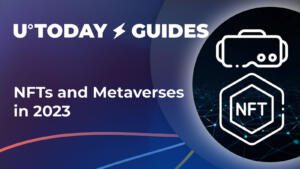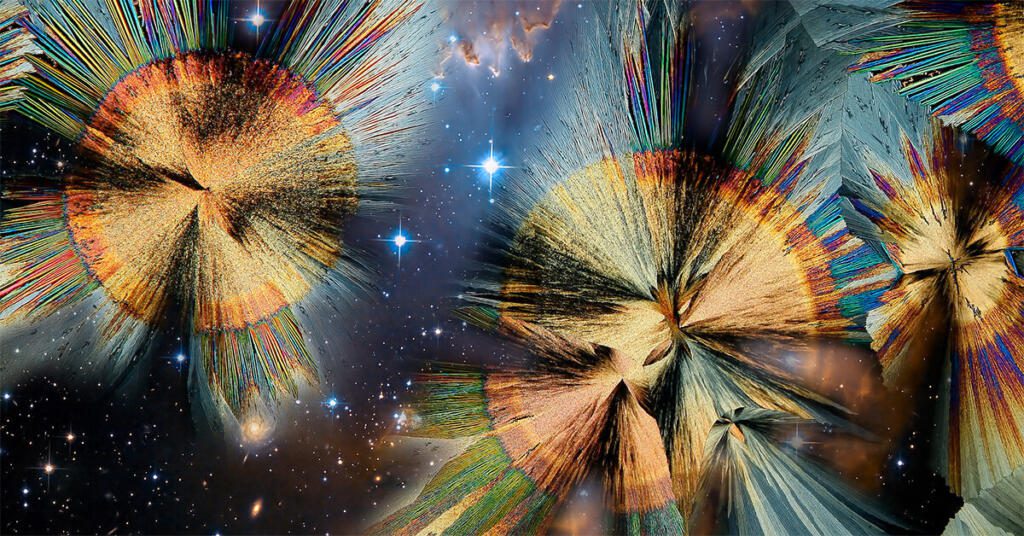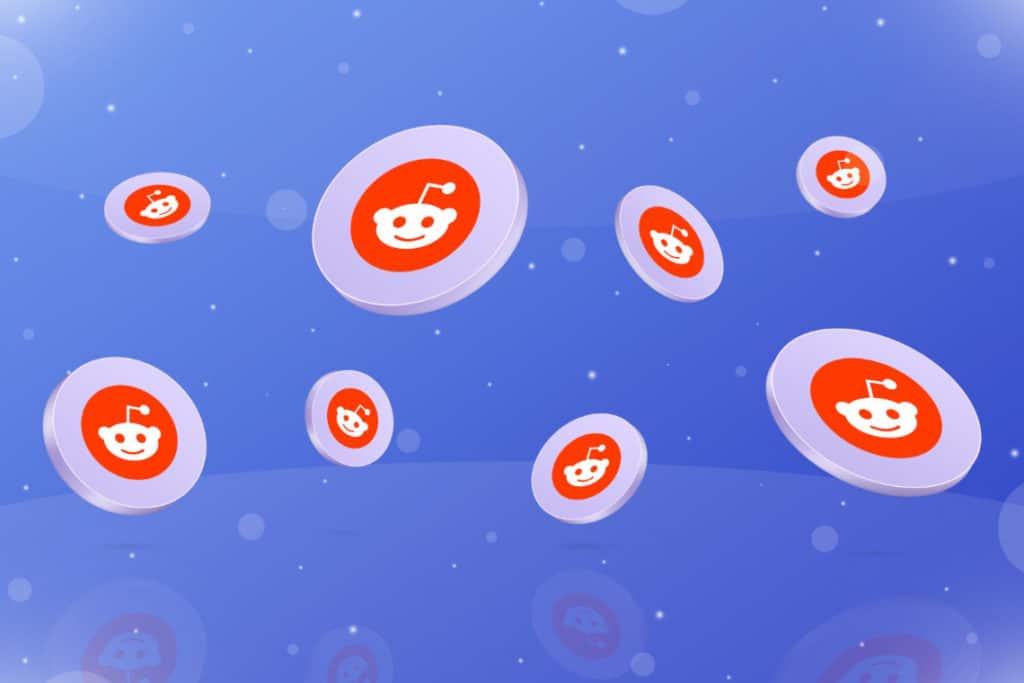[ad_1]
NFTs are ending the year on a sour note, but their impact could be just beginning (Photo by Noam Galai/Getty Images)
Getty Images
What Happened
Table of Contents
If 2021 was the year NFTs first burst into the public consciousness, 2022 was the year of exploration as new projects and uses emerged to test how transformative the technology could be. From the proliferation of new profile picture (PFP) collections, to exploratory forays in fashion, music, entertainment, gaming and metaverse experiences, these new ideas and experiments saw numerous successes and failures.
Although they were accompanied by speculative fervor, NFTs (non-fungible tokens) are proving to be more than just JPEGs on the blockchain. The top projects are building global media brands, creating exclusive content, intellectual property, music, movies and television shows, live events and activations, virtual experiences, gaming titles, limited-edition merchandise and more. By providing new media and experiences NFT collections are following the playbook of the largest entertainment companies in the world, such as Disney.
This year, major brands and corporations have begun tinkering with NFTs to engage and expand their customer bases. Some big names entering the fray in 2022 included Starbucks, Instagram, Nike and Reddit, along with luxury marks like Burberry, Gucci, Louis Vuitton, Dolce & Gabbana and Salvatore Ferragamo. Just as every big business needed to develop its social media strategy with the advent of Internet communication platforms (Twitter, Facebook, Instagram, Google, etc.), leading brands are beginning to realize they must develop NFT strategies to remain competitive.
Staying true to the core ethos of crypto, NFTs are paving novel methods of monetization for creators by reducing the roles of value-extracting intermediaries and allowing artists to form more direct relationships with their fans. Two key revenue streams that NFT creators can tap into are primary issuances of newly minted collections and ongoing royalty payments from secondary-market transactions.
NFTs facilitated greater crypto market adoption by a mainstream audience. By interacting with NFTs for the first time this year, new users have learned about the underlying blockchains supporting the technology such as Bitcoin, Ethereum, Solana, Polygon and Stacks, furthering understanding and adoption of crypto writ large.
Anyone following crypto knows how volatile the market can be. Forbes CryptoAsset & Blockchain Advisor looks at the universe of viable crypto assets with proprietary analysis and insider crypto knowledge to guide you to the best choices.
Market Overview
The year saw the NFT market’s first true hype cycle, reaching its zenith early in the opening months before seeing precipitous declines in trading volume and asset prices. Despite the recent decline, the NFT market has built a larger base of holders, serving as a foundation for the proliferation of the sector in the years to come.
According to data aggregation platform NFTGo, the market capitalization of all collections listed on the site peaked at $35 billion in March. The total currently stands at $21 billion, representing a decline of 40%. Although the market lost steam toward the end of the year, it has still grown immensely from the beginning of 2021, at which point the capitalization stood at just $91 million.
Similarly, NFT trading volume peaked in the first half of the year, with the weekly tally reaching a yearly high of $1.3 billion in April. Trading dropped 91% from that level to $115 million in December. Still, the current weekly total represents a 340% increase over January 2021’s $26 million.
The total NFT market cap fell during the year
NFTGO
When breaking down volume between primary and secondary sales using data from NonFungible.com, the greatest activity this year was in May, with weekly primary transactions reaching $530 million and secondary sales at $1.3 billion. Both categories took big hits, dropping 99% and 93%, respectively, to $4.3 million and $96 million. Clearly, secondary sales make up significantly more volume than primary, and the latter have been less resilient in the bear market.
Secondary NFT sales are much higher than primary issuances
NonFungible.com
Among NFT marketplaces, OpenSea has retained its status as the user-count leader, but it has been challenged by newer entrants such as LooksRare, Blur, X2Y2 and Magic Eden. OpenSea logged over 1.3 million users over the fourth quarter, with Blur coming in second with 172,000. OpenSea accounted for 73% market share in terms of users.
Breakdown of top NFT marketplaces
Dune Analytics
Blur had more daily trading volume than OpenSea over the fourth quarter, reaching a peak of 52,000 ether (ETH) traded (~$62.4 million), compared with OpenSea’s 13,000 ETH (~$15.6 million) in mid-December.
Blur overtook market leader OpenSea in transaction volume this quarter
Dune Analytics
Blur is a relatively new decentralized NFT marketplace, launching its platform in October and catering to professional traders. Blur was able to quickly attract active traders by offering a trader-friendly user interface (portfolio analysis, sweeping features, sniping tool, etc.), zero trading fees and airdrop rewards for users. These features enabled Blur to capture significant market share in the final months of the year.
Although there was much hype going into the launch, the Coinbase NFT marketplace floundered, evidenced by its lackluster usage. Since its launch in April, Coinbase NFT has total trading volume of only $7.2 million from a user base of just 16,230. In the past seven days, the platform has had just $6,300 worth of transactions.
Coinbase NFT has not yet been able to offer a compelling or differentiated product, choosing to forgo features expected from a centralized exchange such as secure custody, fiat-currency onramps, gasfree trading and multichain support. Instead, it leaned into a so-called Web3 approach, requiring users to self-custody their NFTs and trade within non-custodial wallets such as Metamask or Coinbase Wallet. This strategy is strikingly similar to that of most existing marketplaces, including OpenSea.
Despite the lackluster secondary trading, Coinbase NFT has seen some success with its primary issuance platform. It has successfully minted out dozens of collections such as the Bill Murray 1000, Chicago Bulls, The Aurochs, the New York Knicks’ New York Forever, and the Wu Tiger Clan collections.
Major Brands And Personalities Launch NFT Projects
As NFT volume grew and new uses began to manifest, some of the largest brands, companies, and personalities launched collections and projects, which were met with varying degrees of success.
Reddit’s NFT project was one of the biggest winners of the year, bringing in over 4.3 million new users into the space. The social network opened its NFT marketplace in July, releasing Polygon-based PFP avatars based on Reddit’s logo, Snoo. Notably, Reddit never mentioned “NFT” in connection to the initiative, instead opting to name the avatars issued to users as “digital collectibles.”
Nike acquired Web3 3D development studio RTFKT in late 2021 and took advantage of the purchase for its debut MNLTH series, which launched in February. The collection was airdropped to holders of RTFKT’s existing CloneX avatars and PodX virtual spaces. Soon after in April, Nike launched virtual officially licensed sneakers with its CryptoKicks NFT collection. Later in the year, Nike announced its intention to launch its .Swoosh platform by early 2023. Nike plans to position the platform as its hub and online marketplace to launch virtual apparel like t-shirts and sneakers for avatars that can be used within decentralized online games.
Revealed in September, Starbucks Odyssey launched in beta in December to Starbucks Rewards members and partners. The NFT program is an extension of Starbucks Rewards that takes advantage of Web3 technology to unlock benefits and experiences for members. The experience allows members to participate in a series of interactive activities called «Journeys.» Once a Journey is complete, members earn collectible «Journey Stamps» (NFTs) and Odyssey Points that open access to new benefits and coffee experiences. The Odyssey initiative is in its infancy, but Starbucks may be developing the playbook for how global brands can employ NFTs as a more compelling version of loyalty rewards programs.
Despite former U.S. President Donald Trump’s criticisms of crypto in the past – he has called it “a very dangerous thing” and “a disaster waiting to happen” – he changed his tune in December with the launch of his Trump Digital Trading Cards NFT project. The collection featured 45,000 digital trading cards displaying cartoonish graphics of Trump that depict him as characters such as a race car driver, astronaut, cowboy and superhero. Each card was offered for $99, and the collection’s website said it sold out in less than a day, generating $4.5 million for the creators. After its launch, the Trump collection rocketed to the top of OpenSea reaching the number one spot in terms of daily transaction volume, with over 1,900 ETH traded (~$2.3 million).
The excitement generated by the NFT hype cycle also attracted less successful attempts. Two of these projects included singer Chris Brown’s Breezyverse collection and WWE wrestler and actor John Cena’s NFT Kit. The Breezyverse is a collection of 10,000 3D animated NFTs offering holders benefits such as VIP concert tickets, backstage passes and meet-and-greet sessions with Brown. Despite having 116 million Instagram followers, to date only ~8.6% of the collection has been sold. Similarly, Cena’s NFT Kit project, which offered the digital tokens alongside autographed physical memorabilia, only sold 37 units of the 500 supply.
A few other celebrities that saw success with their NFT projects this year included DJ Steve Aoki, rapper Snoop Dogg, movie star and cult figure Bill Murray, rockstar Ozzy Osbourne and actor Johnny Dep.
Yuga Labs’ BAYC Establishing Market Dominance As Top PFP Project
One of the most significant events of 2021 was Yuga Labs’ Bored Ape Yacht Club (BAYC) replacing Larva Labs’ CryptoPunks as the NFT collection with the highest floor price. The flip took place in December 2021 when BAYC reached a floor price of 53 ETH versus CryptoPunks’ 52 ETH. This year saw Yuga Labs increase its lead, as the team continued to build and engage its community of holders. Additionally, Yuga Labs had raised $450 million at a $4 billion valuation, led by venture capital firm Andreessen Horowitz, to fund the development of its ecosystem.
Launched as a free mint collection in 2017, CryptoPunks was the first 10,000-supply PFP NFT collection and accrued the most value as a status symbol signifying the owner’s early adoption of the asset class. Yuga Labs offered its seminal collection, the BAYC, in April 2021 at a mint price of 0.08 ETH, and the project redefined what community-focused PFP projects would be. It was committed to providing continuing value to holders through additional NFT drops, token-gated live activations and events, airdropped ApeCoin rewards, and partnerships with established brands and emerging metaverse worlds.
In March, Yuga Labs launched its fungible token for the Bored Ape ecosystem, ApeCoin. BAYC NFT holders were eligible to claim 10,000 tokens and Mutant Ape (MAYC) owners 2,000. ApeCoin is a governance and utility token meant to bestow voting rights to govern the newly formed ApeCoin decentralized autonomous organization (DAO) as well as provide other utility such as staking. Staking involves users locking up their ApeCoins to earn a yield in exchange for not selling those assets. ApeCoin may also serve as the native currency within the Otherside metaverse Yuga Labs is developing.
At their peak floor values, holders of an original BAYC NFT were rewarded with $408,000 worth of additional value across the airdropped NFTs and ApeCoin tokens they were eligible to receive. This comprises the Mutant Ape (~$111,000), Bored Ape Kennel (~$37,000) and Otherdeed for Otherside NFTs (~$10,000) as well as 10,000 ApeCoin tokens ($250,000 at $25 per token). At time of writing, these assets are priced considerably lower, at a cumulative floor value of $67,000, or a drop of 83% from their all-time highs.
Interestingly, during the period of waning user activity of the bear market in the final months of the year, CryptoPunks re-flipped the BAYC to achieve a higher floor price, where it now sits at 63.7 ETH (~$83,000), compared with BAYC’s 62.6 ETH (~$82,000). This indicates that the NFT community sees the BAYC and its associated assets as a riskier venture bet with a higher chance of failure to deliver on its ambitious roadmap, compared with CryptoPunks’ simple role as a luxury good and status symbol.
Royalties Debate Pits Traders Against Content Creators
NFT creators have two main sources of income: the primary sale of NFTs as well as royalty payments from secondary transactions paid in perpetuity. Royalties are typically set to a fixed percentage of the NFT price and are paid by either the buyer or seller, depending on how the marketplace structures the transaction.
A major debate that emerged this year was the topic of creator royalties and whether market participants would continue to honor them. Royalties are currently impossible to enforce on the blockchain protocol level, so NFT marketplaces have been the focal point of enforcement. In order to remain competitive on pricing and attract buyers and traders, marketplaces were incentivized to not enforce royalty payments.
Ethereum-based decentralized NFT exchange Sudoswap was perhaps the first platform to open up the debate challenging the concept of creator royalties by launching its automated market maker that completely removed royalty payments on secondary transactions. Sudoswap caters to active traders and speculators, and by eschewing royalties and thus offering better pricing, the DEX believes it can gain a stronger foothold among the NFT trader community.
NFT marketplaces Magic Eden and LooksRare followed suit by making royalty payments optional at the point of sale, leaving the decision up to the buyer. Interestingly, X2Y2 had made royalties optional but then reverted back to enforcing the payments after receiving pushback from the creator community.
OpenSea took the position of supporting creators and royalty payments, creating its own on-chain royalty enforcement tool. The enforcement tool requires new and existing collections to update the code of their smart contracts to include a code snippet released by OpenSea. The caveat is that the tool blocks NFT marketplaces with zero royalty or optional royalty fees, challenging the notion of interoperability and composability with other marketplaces and applications.
This industry-wide shift away from royalties has NFT creators, collectors and advocates wondering how projects will fund themselves and incentivize founders’ continual involvement and commitment.
If the market structure moves toward eliminating royalties, NFT project founders and creators may seek to develop new revenue sources. The market may see a greater number of primary drops to supplement the loss in income on royalties. Additionally, creators may seek to charge for additional benefits such as concerts, events, merchandise and subscriptions, which may have otherwise been funded through royalties. Creators could also seek to limit commercial, copyright, trademark and other intellectual property rights on NFTs that are sold on secondary markets without royalties.
This debate continues to rage on, and the market may see further developments and hopefully a resolution in 2023.
The Future
The NFT ecosystem is still in its infancy, and the market will continue to explore and implement new applications of the technology. From provenance and supply-chain tracking, to luxury good counterfeit protection, event ticketing, metaverse digital economies, gaming financial applications, music and entertainment tokenized on-chain revenue flows, voting and governance rights, and token-gated live and virtual experiences, the NFT sector is just scratching the surface on the tangible value the technology can generate.
NFTs will likely have a major role to play in the metaverse, an immersive and potentially decentralized version of the Internet. The first forays into the metaverse defined by early movers such as Facebook’s Meta, the Sandbox and Decentraland may be the equivalent of Atari’s 1972 arcade game Pong and its relevance to the modern-day gaming industry. Although these projects may persevere and prove to dominate the landscape, the ultimate winners will offer products and experiences that completely usurp our current understanding of what the metaverse can be.
One interpretation of NFTs is that the technology enables the tokenization and financialization of culture. NFTs enabled early communities to form around niche ideas and interests, and provided a platform for emerging and established artists to find new ways to monetize their efforts. Although the future may continue to be volatile, the NFT ecosystem should discover new ways to attract participants and increase adoption and growth of the entire crypto economy.
[ad_2]
Source link








